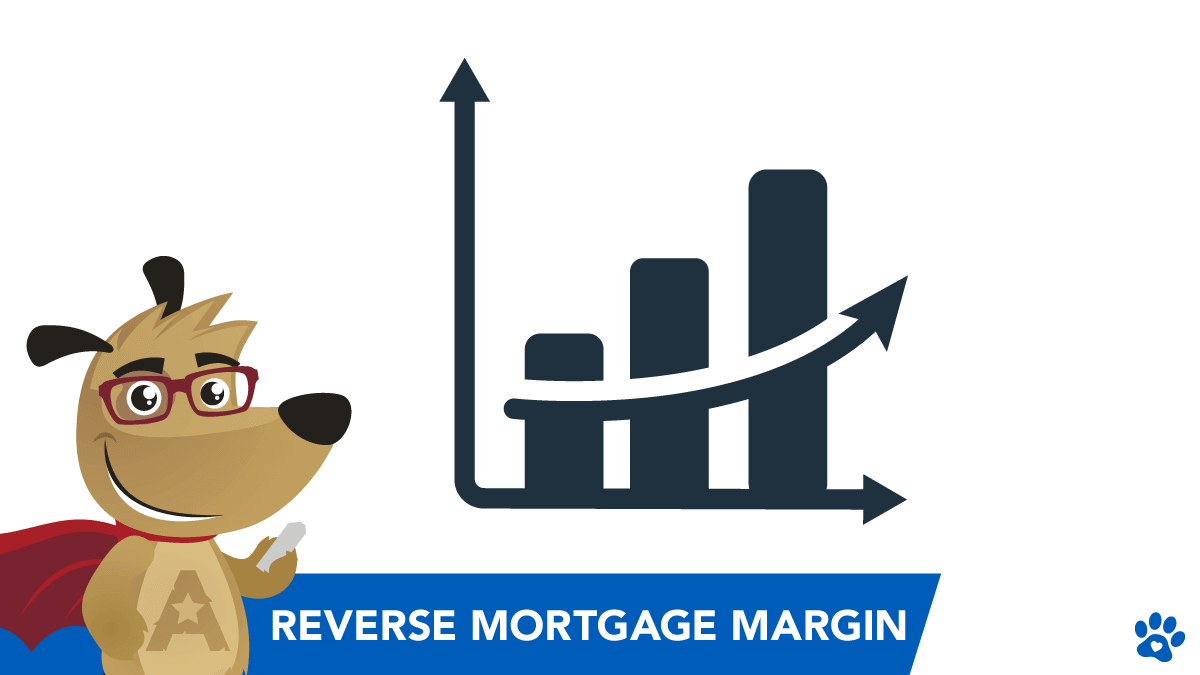
Maximize Your Reverse Mortgage Funds!

 |
ARLO™REVERSE MORTGAGE
ASSISTANT |
How the Reverse Mortgage Margin & Libor Rate Works
 |
Michael G. Branson, CEO of All Reverse Mortgage, Inc., and moderator of ARLO™, has 45 years of experience in the mortgage banking industry. He has devoted the past 20 years to reverse mortgages exclusively. (License: NMLS# 14040) |
 |
All Reverse Mortgage's editing process includes rigorous fact-checking led by industry experts to ensure all content is accurate and current. This article has been reviewed, edited, and fact-checked by Cliff Auerswald, President and co-creator of ARLO™. (License: NMLS# 14041) |

Understanding Your Reverse Mortgage: Key Factors
One of the most common questions about a reverse mortgage is how much money you, as the borrower, can receive. The amount you can get depends mainly on two factors: your age and the loan’s interest rate and margin. Typically, the older you are, the more money you can receive.
Lower interest rates also mean you can borrow more. A higher loan margin means the interest rate must be lower to increase the amount you can receive from a reverse mortgage. The important rate to watch is the Initial Interest Rate (IIR). This rate, which applies at the start of your loan, is determined by adding the index and the margin.
In this article, we’ll explain these factors and what they mean for you, including:
- What is the index?
- What is the margin?
- What is LIBOR?
- How do these affect me?
- What should I ask my loan officer?
- Where can I find more information?
What is the Index?
The index is a base interest rate that serves as a foundation for your reverse mortgage’s initial interest rate (IIR). If the index goes up, so will the IIR.
What is the Reverse Mortgage Margin?
The margin is the interest percentage added on top of the index by the lender, which provides the full IIR for your reverse mortgage. The margin is not adjustable, meaning it stays the same for the duration of the loan regardless of any changes to the index. Fixed-rate HECM loans don’t have an index or margin because the IIR is set for the life of the loan, so these elements apply only to variable-rate HECM loans.
What is the LIBOR Rate?
The indices used for variable-rate HECM loans are often the 1-month LIBOR and the 1-year LIBOR. LIBOR stands for London Interbank Offered Rate, which is the rate of interest that banks use when lending money to each other in London’s wholesale money markets. In the U.S., LIBOR is a standard financial index used in capital markets and is usually published in the Wall Street Journal.
How Do These Factors Affect Me?
As you shop around, pay close attention to the rates the reverse mortgage lenders provide. These rates are crucial in determining how much money you can receive from your reverse mortgage and how much equity will remain in your home at the end of the loan before it is repaid.
Other factors affecting the total interest rate include:
- The amount remaining on your forward mortgage (if you have one)
- A financial assessment of your ability to keep up with insurance and maintenance costs
- The appraised value of your home
When the margin and index are low, you will receive more money for your home, resulting in a low IIR.
Reverse Mortgage Rate Factors Explained
| Factor | Definition | Impact on Loan |
|---|---|---|
| Index | Base rate (e.g., LIBOR, CMT) that fluctuates | Higher index = higher IIR, less funds |
| Margin | Fixed % added by lender to index | Higher margin = higher IIR, less funds |
| LIBOR | London bank lending rate (1-month or 1-year) | Sets index for variable-rate HECMs |
| IIR | Initial Interest Rate (index + margin) | Lower IIR = more funds available |
| Fixed vs. Variable | Fixed: No index/margin; Variable: Adjustable | Fixed: Stable rate; Variable: Rate can rise |
Margin FAQs
What is the current reverse mortgage adjustable rate?
What types of adjustable reverse mortgage rates are there?
Is there a lifetime cap on adjustable-rate reverse mortgages?
Are there any periodic caps on adjustable-rate reverse mortgages?
How does a reverse mortgage margin affect the rate?
Are all reverse mortgage rates and margins the same?
Is the margin on a reverse mortgage fixed?
Questions to Ask Your Loan Officer
- How is my interest rate determined?
- What is the current index rate?
- What margin will be applied to my loan?
- How will changes in the index affect my loan?
ARLO™ recommends these helpful resources:

 Michael G. Branson
Michael G. Branson Cliff Auerswald
Cliff Auerswald

April 7th, 2021
April 7th, 2021
January 23rd, 2020
January 29th, 2020
October 12th, 2019
October 12th, 2019
September 16th, 2019
September 23rd, 2019